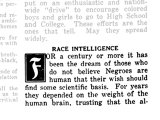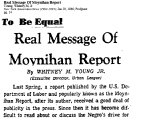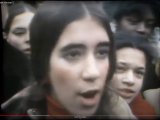You are here:
Racist and Ableist Ideas
Racist and ableist ideas have appeared in education in many forms - from white opposition to Black schooling in the 19th century in the North and the South, to claims of racial differences in intelligence, to white New Yorkers’ statements that only they counted as “parents and taxpayers.” Racist and ableist ideas have often been tools of segregation. Historically, these ideas claimed to justify segregation, suggesting that it was appropriate for students in different racial or ability categories to attend school separately or to have unequal educational opportunities.
Read More
Racist ideas suggest that people can be sorted into racial categories and that people in a given racial category are superior to or inferior to those in other racial categories.[^1] Ableist ideas devalue people with disabilities. For some, ableism includes any negative view of people who depart from social ideas about what is “normal” - ideas that are influenced by racism, sexism, and more.[^2] Racist and ableist ideas often work in connection with and depend on each other, and have been present in education for a long time.
In the 1960s and 1970s, when parents, educators, and community advocates were debating segregation and desegregation at Mark Twain Junior High School in Coney Island, Brooklyn, racist and ableist ideas appeared in how people talked about the school and its students. Some implied that the problem at Mark Twain was not segregation and inequality, but the Black and Puerto Rican students and their families and communities. These speakers seemed to think that these students had fundamentally different abilities, needs, and interests than white students. Others claimed that white children and non-disabled children deserved access to better schools than did Black and Puerto Rican children and Disabled children. Sometimes racist and ableist ideas were shared by white people who thought of themselves as liberal and thought that their ideas could help Black Americans and Puerto Rican Americans or Disabled Americans.
Many racist and ableist ideas were in circulation nationally as well as locally in New York City, including in Coney Island, Brooklyn, near Mark Twain. When parents and community members around the school expressed racist and ableist ideas, their individual attitudes may have been influenced by ideas that were present in public discourse at the time, like the ideas shown in these documents.
These sources are difficult to read and watch, as they reflect direct and indirect public statements of racism and ableism. Please choose to explore them, or not to explore them, based on your own needs.
[^1] This definition of racist ideas draws from the work of Barbara Fields (see, for example, her definition of racism in this excerpt of her book, with Karen E. Fields, Racecraft: The Soul of Inequality in American Life (New York: Verso Books, 2014) https://www.versobooks.com/blogs/news/2482-race-racism-and-racecraft and Ibram Kendi, Stamped from the Beginning: The Definitive History of Race in America (New York: Bold Type Books, 2017).
[^2] For the more expansive definition of ableism, see Talila Lewis, “Working Definition of Ableism,” https://www.talilalewis.com/blog/working-definition-of-ableism-january-2022-update.






